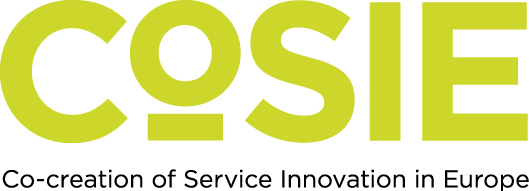Public Participation City: Co-Creation in Athens

The last decade has seen a shift towards more democratic, participatory, decision-making processes outside of centralised institutional models. While in Greece co-creation has not yet been fully developed there have been some initiatives that open the way for more innovative and co-creative projects in the future. Despite the fact that Public Participation (PP) procedures in the design of public spaces have been partially incorporated into Greek law (e.g. Sustainable Urban Mobility Plans), the relevant bodies are not familiar with the concept. Typical consultation procedures usually take place and conflicts of interest (e.g. environmental conflicts) remain unresolved and make planning difficult. The need for a different approach to public space planning arises, resulting in the development of decision-making methodologies by users towards the state.
In order for the methodology and techniques of participatory planning to change spatially, the use of ppGIS (Geographic Information Systems technologies that promote involvement of citizens), new technologies, methods of population, IoT and social networks is absolutely necessary. Participatory design processes through an electronic structured platform aims to make public space users and stakeholders an active part of the design process. The research and commercial breakthrough that will take place with the ppCITY project (https://ppcity.eu/objective/?lang=en) is summarised as follows.
Workshops
Essential knowledge for the participants: Relevant lectures in the early stages of the workshop depending on the needs to be identified; Procedures for identifying problems and formulating goals; Interacting with citizens through structured spatial questionnaires, use of integrated social networks, methods and tools of crowding; Design “games” that will help to better identify the study area, such as “the best places in my neighborhood” or “what’s my favourite walking route”; Typologies of public spaces, problems, design solutions, intervention options and visualisation tools.
Digital Platform
Digital libraries with the necessary knowledge, examples, good and bad practices; Collection of city and area data from all possible sources (spatial data, sensors, measurements and information from other bodies, analysis results) as well as measurable visual information (indicators); Typologies of public spaces, problems, design solutions, intervention options and visualisation tools; Τools for data extraction and participant suggestions; Using social networks to measure impact and social activation.
Technologies used
ppGIS: Web-GIS systems that integrate user participation and viewpoints in the design and resolution of spatial multi-factor and multi-criteria problems are at the cutting edge of spatial problem solving technology and a number of prototypes have been produced.
Data Hub: gathering data necessary for the preparation of studies by obtaining static copies from their providers; Use different tools to exploit them, depending on the format; Creating a data node to gather information at one point, hiding transformation and input details.
Smart City: The smart city integrates information and communication technologies (ICT) as well as IoT sensors to manage city resources, continuously monitors its status, and thus improves the quality of life and service for the citizen. An infrastructure for integrating IoT sensor data into the participatory design platform will be developed. In addition, citizens will be able to act as data providers for monitoring the situation of the city itself.
Social Media Integration: The integration of social networks is a necessary step for the widest possible engagement of the public in Participatory Design.
Within the framework of this project the Municipality of Athens initiated the implementation of a participatory co-design process where the people of Athens had the opportunity to respond to a series of questions regarding life in Athens during the summer heat. This particular project includes the creation of three innovative platforms-tools for citizens so that they will actually design their city themselves, in collaboration with local and municipal authorities.
The first step was that citizens of Athens could fill in a spatial questionnaire (https://ppcity.getmap.gr/) that was active until the end of August 2019. That was an electronic map in which each citizen could fill in by replying to specific questions like “which are the warmest and coolest places in Athens?”, or “which green public places do you visit the most?”. This first platform will lead to a database that will trace, categorise, and analyse specific problems related to the city, which in this case will be the summer heat waves and climate change. The replies collected from citizens in Athens will work together with data coming from sensors placed in various parts of the city that measure pollution and temperature, along with data gathered from social media.
The other two platforms to be developed in the next phase include a tool box on co-creation and co-design with an e-library of good practices and the third one will be a central e-bank for monitoring and visualisation of indicators and data. Further seminars and workshops with the participation of citizens will take place in the following months in Athens and Thessaloniki. Through this process, a municipal piece of land in Athens and a school yard in Thessaloniki will be the first public places that will be designed and redeveloped through a participatory and co-creative process, based on decisions taken together with citizens.
Writer: Alexandros Sakellariou, Panteion University of Social and Political Sciences
